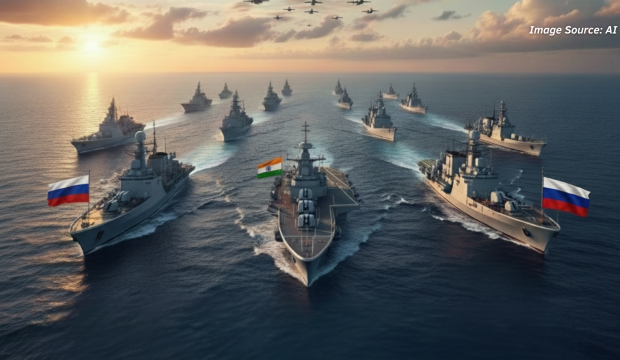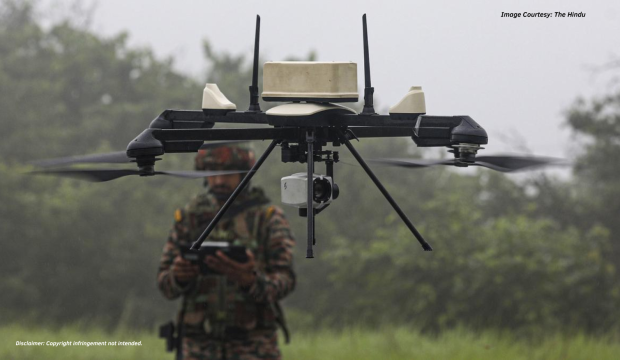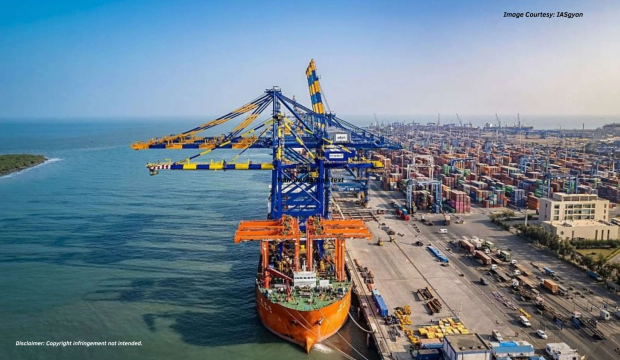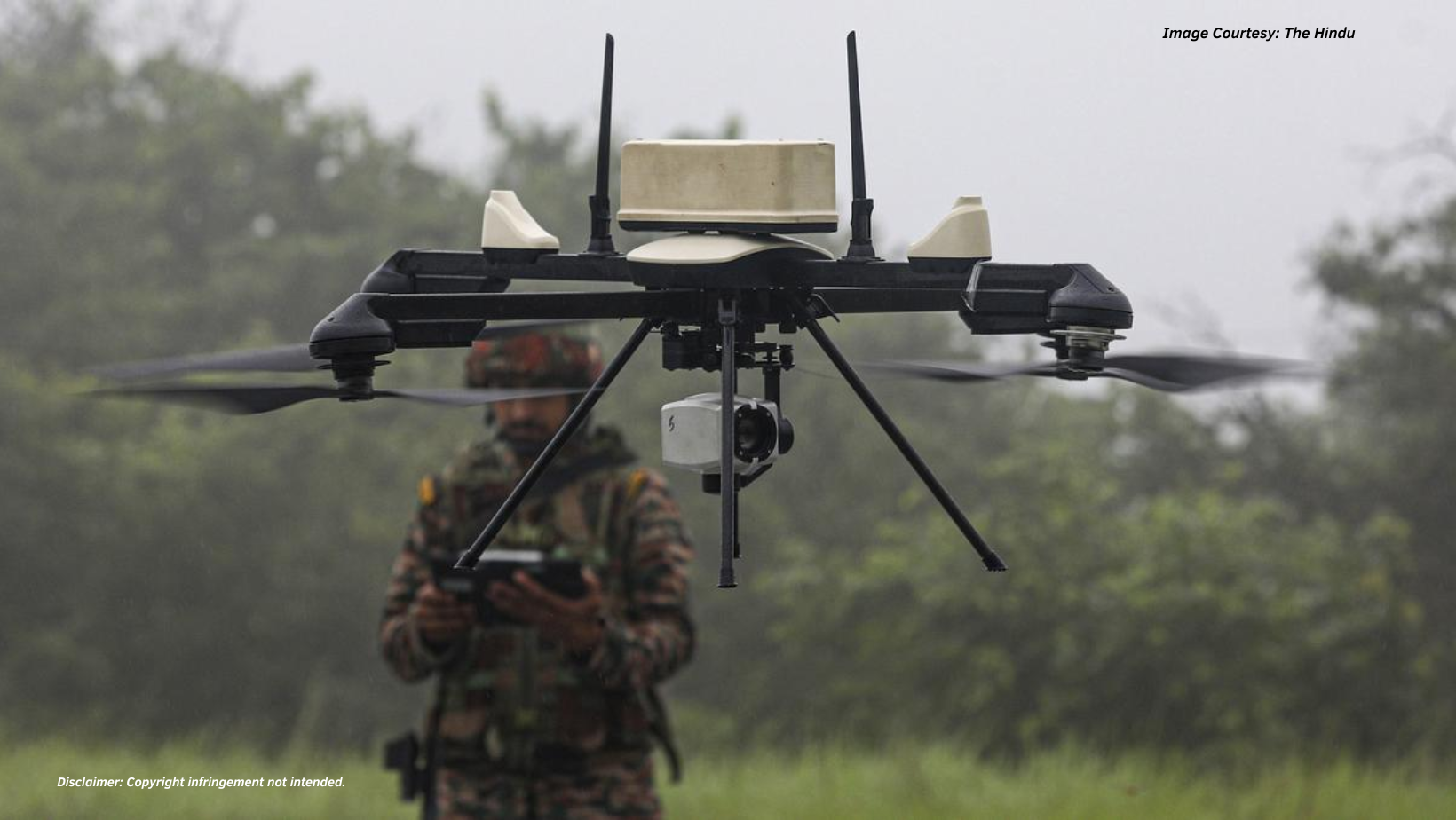The Geopolitical Chessboard and the Shifting Balance of Power in the Middle East
The Middle East’s geopolitical complexity is rooted in its history, energy resources, and religious significance. The region’s centrality as a crossroads of Europe, Asia, and Africa makes it geopolitically vital[i] Historical legacies and contemporary issues shape its politics.
The Middle East’s importance dates back to early civilizations in Mesopotamia, Egypt, and the Indus Valley. The rise of Islam in the 7th century united the region under a common faith. European colonization in the 19th and 20th centuries led to political changes, marked by the Sykes-Picot Agreement and the Balfour Declaration. The Cold War intensified its significance. The United States and the Soviet Union vied for influence in the region, fuelling regional conflicts. Egypt’s President Gamal Abdel Nasser’s alignment with the Soviet Union and the subsequent Suez Crisis in 1956 highlighted the region’s pivotal role in superpower politics.
The discovery of vast oil reserves in the mid-20th century transformed the Middle East into an energy hub. Control over these resources became a central tenet of geopolitical rivalries. The Organization of the Petroleum Exporting Countries (OPEC), founded in 1960, enabled oil-producing nations to wield considerable influence on the global stage.
The Arab-Israeli conflict, stemming from the creation of Israel in 1948, has been a recurrent flashpoint. This ongoing conflict has drawn international involvement, particularly from the United States, which has consistently supported Israel. Peace processes like the Camp David Accords and Oslo Accords influenced regional geopolitics. Recent developments in the Middle East continue to reshape its geopolitics. The Arab Spring in 2011 and conflicts in Syria, Iraq, and Yemen reshaped the Middle East. Various actors, including Iran, Saudi Arabia, Israel, and global powers like the U.S., Russia, and China, influence the region.
Current Geopolitics
The Middle East is currently undergoing profound geopolitical shifts, driven by a series of transformative events.[ii]. The Abraham Accords, a series of agreements involving Israel, UAE, Bahrain, Morocco, and Sudan, have had significant regional implications. The “West Asian Quad” is emerging as a prominent alliance, fostering infrastructure development in the region.
Another critical development is the growing influence of China, with a historic agreement between Saudi Arabia and Iran symbolizing regional realignment. These shifts indicate a departure from the previous Middle East status quo. The Gaza versus West Bank dilemma also represents a longstanding issue. Gaza’s dire living conditions, coupled with a blockade, have created challenges, while the West Bank’s political situation and proximity to Israel present distinct concerns.
The recent Hamas attack on Israel is influenced by these strategic shifts. These include Iran’s containment, control of key maritime chokepoints, and U.S. disengagement in the Middle East. The impending Saudi-Israeli peace agreement is a driving force behind the Hamas attack. It offers security guarantees to Saudi Arabia from the U.S. and establishes a maritime containment belt to constrain Iran and Hamas. U.S. disengagement from the Middle East, which began during the Obama administration, created a regional power vacuum and led to competing interests among regional powers. Saudi Arabia seeks security guarantees from the U.S. as part of a containment strategy against Iran and Hamas. The Abraham Accords and the planned Saudi-Israeli peace agreement created a U.S.-cantered alliance controlling key maritime chokepoints, limiting Iran’s movements and influence. Egypt, aligned with Gulf states, also controls a significant land crossing into Gaza. Thus Hamas and the Palestinian cause was under threat of going into oblivion.
Hamas: From Ideology to Armed Resistance
Hamas’ role as the “leader” of Palestinian resistance is rooted in its formation out of the ideological incubation of the Palestinian Muslim Brotherhood in 1987. It had a radically different political approach than its immediate rival, Fatah, which was more open to working through political dialogue and institutionalized mechanisms. The intra-Palestine battle between these two groups ended in 2007, with Hamas coming out on top in the 2006 elections, which were pushed by the US. This marked Hamas’s authority across Gaza as it prioritized armed resistance over negotiations. This shift coincided with Israeli forces withdrawing from Gaza in 2005.
Hamas’ rise also involved installing a level of internal “stability” by controlling other Salafist groups looking to use Palestine as a springboard for their agendas. Hamas, a Sunni movement, found regional patrons in groups like Hezbollah, a Shia militia supported by Iran. Hezbollah chief Hassan Nasrallah was reported as saying [iii], “Any country that signs a normalization agreement (with Israel) must be condemned and its actions denounced.” These ideological and theological alliances around the Palestinian cause were acts of strategic convenience, merging around the common aim of disallowing Israel a normal existence. The scale and coordination of this attack now also put Hamas beyond the ambit of just a terrorist group. As highlighted by Michael Milstein, a former IDF official, it resembles a “quasi-military” force.[iv]
The Recent Escalation of Hamas -Israel Conflict
Hamas’s recent attack is aimed at disrupting the emerging regional security order created by these geopolitical shifts. It sought to provoke a broader regional conflict, given the convergence of threats to key strategic interests. It has entered an alarming new phase that threatens regional stability with global geopolitical fallouts. The shocking events of October 7, 2023, involving Hamas, have had far-reaching implications, generating international concern and rekindling debates about the path to peace.
In the diplomatic theatre, whispers hinted at an unprecedented rapprochement between historical foes, Israel and Saudi Arabia, with the tantalizing prospect of U.S. security assurances for the latter. Yet, lurking in the shadows, Iran harboured its inscrutable ambitions, motivated by a deep-seated fear of being geopolitically boxed in. For Hamas, disrupting the emerging peace deal became a high-stakes gambit, as it sensed the potential isolation that lay in the balance, adding an electrifying layer of complexity to the ever-evolving chessboard of global politics and the cause of Palestine.[v]
Unprecedented Violence
The tragic events that unfolded on October 7, 2023, sent shockwaves throughout the world. The military wings of Hamas and Palestinian Islamic Jihad launched a brazen, surprise attack on civilian and military targets in southern Israel, marking an unprecedented escalation in the Israeli-Palestinian conflict. The scale of the assault was staggering, resulting in the loss of more than 1,400 Israeli civilians. What is particularly disturbing is the grotesque and brutal nature of these attacks, which, in their sheer scale and violence, harkened back to some of the darkest chapters in history, most notably the Holocaust. Furthermore, more than 150 individuals were taken hostage, including several American citizens. The Israel response has so far resulted in over 7300 being killed in Gaza itself. Several thousands have been displaced. The toll on human lives and suffering has been unprecedented and tragic.
These shocking events have been described as the largest mass murder of Jews since the Holocaust, and they immediately brought to mind the events of the Yom Kippur War of 1973. The sheer audacity of the attack, its scale, and its impact have left not just Israel but the international community grappling with how to respond to this new, terrifying phase of the conflict.
Israeli Response
In the aftermath of the attack, the Israeli military launched a swift and intense retaliation.[vi] Within just six days, over 6,000 bombs rained down on Gaza. To put this into perspective, this volume of munitions exceeds what was dropped on Raqqa during the lengthy siege against the Islamic State and is comparable to the annual number of bombs that fell on the entirety of Afghanistan during a single year of conflict. The situation is now on the brink of a ground invasion by the Israeli Defence Forces, with the escalation in ground operations, air strikes and missile launches, further underscoring the gravity and dangerous nature of this new phase of the Israeli-Palestinian conflict. Limited skirmishes on the Israel-Lebanon border are indicative of its spread. As per the UN, more than 19000 have been displaced in Lebanon itself.
Shifting Strategies
Carl von Clausewitz had professed that “war can be of two types.” The first is when one side attempts “to overthrow the enemy—to render them politically helpless or militarily impotent.” Otherwise known as unlimited war. The second is a “limited” war that creates favourable conditions for “bargaining at the peace negotiations.” The strategies required for limited and unlimited war are different. A limited war strategy requires wearing down an adversary’s political will. This will not work in unlimited wars, where victory demands the destruction of his physical capability and the reciprocal effect of psychological paralysis of the enemy.[vii]
The startling events that have transpired in this latest phase of the Israeli-Palestinian conflict have prompted Israeli policymakers to re-evaluate their strategies and approach to this protracted struggle. Traditionally, Israel has relied on limited warfare sometimes referred to as ‘mowing the grass, to foster deterrence against Hamas to keep it from growing out of control. The belief was that targeting Hamas’s will and limiting its offensive capability to fight would be sufficient to manage the conflict. Dealing with Hamas in Gaza puts Israel in a strategic quandary: It needs to exert enough force to deter Hamas from attacking but not so much that it topples the regime.[viii]. Some Israeli voices, especially on the political right, even considered Hamas a useful adversary because they believed it kept the Palestinians divided and reduced the pressure on Israel to make political concessions. However, the effectiveness of these limited war policies is now under scrutiny.
One key assumption that underpinned Israel’s approach was the belief that their superior intelligence and security capabilities offered adequate protection. This belief, however, has been severely challenged by the scale and audacity of the recent attack. The second assumption revolved around the nature of Hamas. In recent years, there has been a concerted effort by the international community to convince Israel that the genocidal anti-Semitism enshrined in Hamas’s charter and rhetoric was not truly representative of the organization and that Hamas had moderated its stance and could potentially keep the peace or, at the very least, be deterred. A perfect ruse played up by Hamas who saw the indicators of the Palestinian cause getting diluted and the imperative to subvert the Arab – Israel accords.
Limited Options
The Israeli leadership now faces a grave dilemma. The core objective of annihilation of Hamas or the least a severely degraded Hamas and rendering it politically impotent remains the only politically acceptable goal. However, no clear and effective military strategy exists to achieve these objectives in the context of unlimited war. Simply intensifying the strategies employed in previously limited wars against Hamas is unlikely to lead to success, as mass casualties are unlikely to force Hamas to surrender. The shift towards unlimited war would likely necessitate a ground campaign to take control of Gaza. This would not only lead to a humanitarian crisis due to collateral damage but also be costly for Israel to achieve its objectives in an intensely hostile urban environment. The exit policy too would present critical challenges to govern in a hostile population environment, something which led to the Israeli 2005 exit from the Gaza Strip.
While such a campaign may yield short-term results, the problem lies in the long-term consequences. Unlike ISIS, Hamas enjoys significant support among the Palestinian population. To achieve lasting effects, an invasion of Gaza might ultimately transform into a protracted occupation. This would carry an immense cost for Israel in terms of both lives and resources. The prospect of an unmanageable insurgency in Gaza is a scenario that even far-right Israeli governments have feared since Israel’s withdrawal from Gaza in 2005.
The analysis of the military options reveals a complex strategic landscape for Israel. The objective of eliminating or weakening Hamas appears valid, but the means to achieve this goal remain elusive. It is a challenge that Israeli leaders grapple with, as they seek a path forward in this new phase of the conflict. This blood path of war may never bring lasting peace and could see another spike of vengeance sometimes later from not only Hamas but its global supporters both state and nonstate.
Intelligence Failures
The surprising nature of the attack raises questions about intelligence failures within Israeli security and intelligence agencies. Historically, Israel’s intelligence services have been widely regarded as highly capable, excelling in human source networks and sophisticated technical capabilities. These capabilities are often augmented by their closest allies, including the United States. The notion that the Israelis could have missed an attack of this magnitude has astounded many observers. Was it complacency due to overconfidence or was it playing up to the ruse through a well-orchestrated information warfare campaign?
There are multiple theories regarding these intelligence failures. One theory posits that Israeli authorities simply did not believe that Hamas had the inclination or capability to launch an attack of such magnitude. Despite reports that Hamas had constructed a mock Israeli village on their side of the border and had conducted training exercises simulating an attack, the Israelis may have underestimated their adversary.
It is also reported that the Egyptians warned the Israelis three days before the assault, cautioning them that “something big” was coming. These warnings were sourced from unnamed Egyptian sources and were corroborated by public comments from Chair of the House Foreign Affairs Committee Michael McCaul. Nevertheless, the Israeli response to these warnings appears to have been one of scepticism. The question arises as to whether the Israelis underestimated Hamas’s capabilities or intentions.
Another aspect that requires consideration is the potential over-reliance on technically acquired intelligence. The Israelis have long been acknowledged for their extensive human source networks. However, in this particular case, it appears that they either lacked adequate human intelligence reporting their human sources were unreliable, potentially compromised by Hamas, or were feeding them disinformation. It is also plausible that the Israelis had reliable sources, but they simply did not believe what these sources were conveying.
An observation from some Israeli commentators suggests that the relationship between Israel and the residents of the Gaza Strip has become regularized. Many Gazan day labourers routinely crossed the border to work in Israel. The assumption was that these individuals would not put their economic security at risk by mounting an attack. It is also conceivable that Hamas’s deception strategy was designed to convince the Israelis that Gazans preferred peace and prosperity over Hamas’s unrealized political objectives.
Notably, such intelligence failures are not unique to Israel. The history of intelligence is riddled with instances where sophisticated agencies fail to connect the dots or underestimate the intentions of adversaries. For example, the United States took little to no pre-emptive action in response to CIA assessments during the summer of 2001 that indicated an increase in al-Qaeda activity, including an August 2001 Presidential Daily Brief (PDB) that cited preparations for an imminent attack against the United States.
While the Israeli intelligence apparatus is indeed formidable, it appears that the October 7 attack has revealed vulnerabilities in their assessment of the situation. The inability to anticipate the scale and audacity of the assault has raised concerns about the effectiveness of their intelligence and security measures.
Global Implications of the Conflict
Hamas’s attack on Israel in the context of evolving Arab-Israeli relations has implications extending far beyond the Middle East[ix]. The consequences of this event affect global politics and international relations in various ways:
International Diplomacy: The attack tests the diplomatic relationships formed as a result of the Abraham Accords, which saw several Arab nations normalize relations with Israel. The level of commitment these nations have to their newfound alliances with Israel will be assessed during this crisis.
US Role in the Region: The United States has historically played a pivotal role in brokering peace agreements in the Middle East. The Biden administration faces a formidable challenge in maintaining stability while reconciling its interests in the region, which include supporting Israel and promoting a resolution to the Israeli-Palestinian conflict.
Israeli Weapons: The Israeli weapons industry, already a global powerhouse, could see increased demand from nations seeking advanced defence systems. Israel’s ability to successfully employ its systems during the conflict might boost its international arms trade.
Global Security: The international community will be closely observing the situation, as it involves a terrorist organization challenging the territorial integrity and national sovereignty of a United Nations member state. This could set a precedent for future conflicts involving non-state actors and global security concerns.
Humanitarian Consequences: As the situation in Gaza worsens, the plight of the civilian population will garner international attention, potentially influencing humanitarian aid efforts and policies.
Saudi-Israel Relations: This crisis could jeopardize Saudi Arabia’s ongoing talks with Israel. The stakes are high for Saudi Arabia, as its role in regional security could be impacted significantly.
Iran’s Influence: The crisis provides an opportunity for Iran to solidify its influence in the region, primarily through its support for Hamas. The United States and its allies will need to weigh the consequences of allowing Iran to expand its regional influence further.
International Conflict Mediation: The United Nations and other international bodies might attempt to mediate a ceasefire, placing the crisis on the global diplomatic stage. Once again their credibility will be at stake.
Regional Implications of the Conflict
The ramifications of the recent developments in the Israeli-Palestinian conflict extend far beyond the borders of Israel and Gaza. Regional stakeholders have responded cautiously to the crisis, condemning the siege of Gaza on humanitarian grounds but refraining from altering diplomatic and trade relations with Israel.
The Abraham Accords, a series of normalization agreements between Israel and Arab states, have been heralded as a significant geopolitical shift in the Middle East. However, the recent escalation of violence has raised doubts about the future of these agreements. While Israel’s Arab allies, including Egypt, Jordan, Morocco, Bahrain, and the United Arab Emirates, have criticized the humanitarian situation in Gaza, they have not been willing to abrogate diplomatic and trade relations with Israel to express their displeasure. The region’s rulers are well aware of the anti-Israeli sentiments within their societies, but they also share a strong aversion to Hamas and its radical Islamist ideology.[x]
Saudi Arabia, a key regional player, was negotiating normalization with Israel when the recent violence erupted. However, the Saudi leadership’s response to these events has been to show solidarity with Iran by engaging in discussions with the Iranian president. This symbolic act reflects the broader pro-Palestinian sentiment in the region and signals that the prospects of Saudi-Israeli normalization are now uncertain.
One possible silver lining is that neither Iran nor its proxy, Hezbollah, has heeded Hamas’s calls for a widespread attack on Israel. Both understand the consequences of such an escalation and the potential for direct U.S. intervention. Nevertheless, the situation remains highly delicate, with the possibility of further regional destabilization looming.
Implications for India in the Hamas-Israel Conflict
Diplomatic: India has transitioned through three distinct phases in its foreign policy toward Israel. Initially, it refrained from formal diplomatic relations with Israel due to its commitment to the Palestinian cause. In 1992, diplomatic relations were established, primarily for economic and security reasons, and Israel became a major military equipment supplier to India. The third phase began in 2014, marked by closer political ties and significant trade between India and Israel.
The recent escalation of the Hamas-Israel conflict poses complex diplomatic challenges for India. India’s evolving relationship with Israel and its historical support for Palestine necessitate a careful and balanced approach. However, the ongoing Middle East violence disrupts India’s diplomatic efforts and risks spillover effects in the region, potentially jeopardising India’s economic interests and relations with Arab nations.
The continuation of Israel’s ground offensive, rising civilian casualties, and suffering in Gaza could reduce international sympathy for Israel, potentially leading to pressure from the United States to end hostilities. India should advocate for a resolution to the Palestinian issue, as prolonged conflicts often intensify efforts to achieve lasting peace. India’s reaction includes expressing support for Israel, plans to repatriate its citizens from Israel, and a commitment to a two-state solution, emphasizing the importance of upholding international humanitarian law and combating terrorism.
India’s foreign policy balance between supporting Palestine and fostering closer ties with Israel is essential for maintaining strategic interests and partnerships in the Middle East. India’s stance in the United Nations will be closely monitored, as it could lead to increased Western support for its anti-terrorism initiatives. India recently abstained from the UN resolution drafted by Jordon along with 45 other nations as it failed to mention terrorist attacks by Hamas. The conflict will also impact India’s supplies from Israel and affect initiatives like the India-UAE-Israel-United States Economic Alliance (I2U2) and the India-Middle East-Europe Economic Corridor (IMEC) due to the ongoing violence.
National Security: The ongoing geopolitical crisis and conflict in West Asia, highlights the need for a high state of operational readiness and agile national response strategy should deterrence fail. The glaring absence of a national security strategy once again highlights the serious deficiency. The tendency of underestimating the adversary or politically underplaying the threat can be catastrophic. Security Forces should avoid falling prey to fighting future wars with yesterday’s structures, doctrines and capabilities. It’s an era of multidomain warfare with threats both kinetic and non-kinetic escalating from state and non-state actors.
Leveraging technology for national security is an imperative. Yet, technological advancements are a force multiplier but the foundation remains the force or the human element and its ability to adapt and exploit technology without blindfolded subservience.
Even though India is the fifth largest economy in the world, it still relies on major exports of military equipment. Conflicts like Russia-Ukraine and Hamas-Israel will choke the global supply chain. A nation must thus be prepared to fight its wars with internal resources which requires a resilient and integrated defence industrial complex. India needs to step up its tempo for the strategic imperative of self-reliance as a national priority.
The potency of threat from pernicious non-state actors has also grown manifold. Religious fundamentalism and Islamist terrorism have already cast their shadow across the entire landscape of India. The support for Hamas in certain sections and the growing assertions are writings on the wall. This along with information warfare is a threat that is silently burgeoning in geometric proportion to hound the nation one day. Its evil hands must be crushed before they strike.
Military: Militarily, India needs to re-examine its strategic, operational and tactical intelligence network both technologically and more importantly the human element C5ISR needs major focus. Because of its diversity, India needs greater coordination in its internal and strategic intelligence. Kargil 1999 and Galwan 2020 besides the 26/11 terror attack have exposed chinks in our intelligence network which could be exploited. While some progress has been made in systems and data interoperability, the defence forces still lack a common joint C5ISR architecture that allows data to be moved from all domains and across multiple platforms and sensors, rapidly, efficiently, and effectively. The present system is also more focused on the need to know rather than the need to share. The existing challenges and inhibitors are multi-parentage, lack of integration, accountability and duplicity in the system[xi]. Besides, there is the challenge of existing platform-centric focus versus desired net-centric synergy, along with stimulus to processing, exploitation, and dissemination methods. These challenges have resulted in a sub-optimal C5ISR grid with limited capability, capacity, coverage, connectivity and ability to overcome constraints of weather and terrain. Thus, the need is for enhanced richness, reach and interaction in our C5ISR architecture both for the LC (Line of Control) and LAC (Line of Actual Control).
Similarly, there is a need to review the deterrence posture both on the Western and Northern front. The emergence of the multi-domain threat spectrum, escalating internal vulnerabilities and an overarching condition of strategic volatility, under which national security is now required to operate, mandates a nation to invest in credible deterrence against future threats and build up time-sensitive desired capabilities to counter them. The application of deterrence concepts and capabilities requires formulation in the context of adversaries’ behaviour and strategic culture. There are many concepts and functional aspects of deterrence, but generally, deterrence involves three essential components which are capability, credibility and communication. India needs to invest more and not let peacetime diversion or political myopic focus weaken deterrence. India’s conventional deterrence has been repeatedly put to the test in the recent past, leading to the exposure of strategic and operational voids, vulnerabilities and reactive response constructs.
Theoretically, there are two fundamental approaches to deterrence – ‘Deterrence by Punishment’ which threatens assured retribution making it cost-prohibitive for the adversary, and ‘Deterrence by Denial’ which seeks to convince an adversary that the aggression would fail to achieve its operational aims resulting in strategic embarrassment. Each approach is specific to a nation’s threat matrix and geography. Yet punitive response strategies are rarely effective in wartime, and even less useful as deterrence in peacetime. As conflicts pave the way to military coercion below the threshold of a full-scale war, so must the doctrinal shift be to a strategy of denial to deter an adversary’s misadventure.
India’s force structuring philosophy has been essentially based on the traditional ‘Deterrence by Punishment and Threat cum Capability Approach’ rather than the ‘Deterrence by Denial and Capability Bases Approach’[xii]. Thus, both borders remain turbulent with space for conflict and coercion. This is essentially a fallout of the absence of the National Security Strategy and periodic strategic security reviews resulting in a lack of an institutionalized framework. Military transformation be it cultural, processes or capabilities requires an overarching framework. Doctrines and force structures as part of military transformation can never be evolved in a vacuum. This critical void needs to be addressed.
The future restructuring philosophy will need to focus on a ‘capability-based approach with deterrence based on denial strategy’. Further comprehensive deterrence of a nation goes beyond defence and encompasses diplomacy and development. Yet Defence remains foundational without which deterrence will fail and diplomacy cum development crumble. In today’s strategic fragility environment, we need a more astute civil-military fusion to strategise future threats and deter them through robust multi-domain capabilities, in the spirit of ‘Nation Above All’.
Conclusion
The recent events in the Israeli-Palestinian conflict have thrust the region into a perilous new phase. The immediate consequences are tragic, with devastating loss of life and suffering on both sides. The long-term implications, however, remain uncertain, and the potential for further escalations in violence poses a significant challenge to regional and global stability.
India will have to learn its strategic and operational lessons well to reinforce its strategic deterrence and be prepared for all contingencies be it state or non-state actors. Diplomatically it will need to balance its policy towards furtherance of its national interests. To secure its position as a significant player in the region, India must carefully balance its relations with Israel and the Arab world. Finally, India must learn the right lessons from these conflicts. In the words of Otto von Bismarck — ‘Only a fool learns from his own mistakes. The wise man learns from the mistakes of others.’
DISCLAIMER
The paper is author’s individual scholastic articulation and does not necessarily reflect the views of CENJOWS. The author certifies that the article is original in content, unpublished and it has not been submitted for publication/ web upload elsewhere and that the facts and figures quoted are duly referenced, as needed and are believed to be correct.
References
- Middle East, World 101, Council for Foreign Relations, https://world101.cfr.org/rotw/middle-east/geopolitics
- Sir Tom Beckett, Chair, The geopolitics of the Hamas–Israel war, IISS, 13 Oct, 2023, https://www.iiss.org/events/2023/10/the-geopolitics-of-the-hamas-israel-war/
- Kabir Taneja, Hamas attack against Israel seeks to counter-shape regional order in West Asia, Raisina Debates, ORF, Oct 09 2023, https://www.orfonline.org/expert-speak/hamas-attack-against-israel-seeks-to-counter-shape-regional-order-in-west-asia/
- The Asia Alive, Hamas’ Offensive: Disrupting Middle East’s Regional Order, Oct 10, 2023, https://theasialive.com/hamas-offensive-disrupting-middle-easts-regional-order/2023/10/10/
- A Conversation With Martin Indyk, Why Hamas Attacked—and Why Israel Was Taken by Surprise, Foreign Affairs, 7 Oct,2023, https://www.foreignaffairs.com/middle-east/martin-indyk-why-hamas-attacked-and-why-israel-was-taken-surprise
- The Hamas attack on Israel: Context, analysis, and potential repercussions, Analysis, Arab Center Washington DC, 11Oct 2023, https://www.newarab.com/analysis/hamas-attack-israel-context-analysis-and-repercussions
- Sam Helfont, James Ryan, Joshua Krasna, A Dangerous New Phase in the Israeli-Palestinian Conflict, Expert Commentary, Foreign Policy Research Institute (FPRI), Oct 2023, https://www.fpri.org/article/2023/10/a-dangerous-new-phase-in-the-israeli-palestinian-conflict/
- RAND Corporation, Lessons from Israel’s Wars in Gaza, https://www.rand.org/content/dam/rand/pubs/research_briefs/RB9900/RB9975/RAND_RB9975.pdf
- Newsletter, Editorial, Daily Review: Global Implications of the Israel-Hamas War, World Politics Review, 13 Oct 2023, https://www.worldpoliticsreview.com/daily-review-israel-hamas-war-global-implications/
- Kabir Taneja, Hamas attack against Israel seeks to counter-shape regional order in West Asia, Raisina Debates, ORF, Oct 09 2023, https://www.orfonline.org/expert-speak/hamas-attack-against-israel-seeks-to-counter-shape-regional-order-in-west-asia/
- Lt Gen A B Shivane, Focused C5ISR- A Critical Capability For Turbulent And Disputed Borders, CENJOWS, Jun 2022, https://cenjows.in/wp-content/uploads/2022/06/C5ISR-A-Critical-Capability-by-Lt-Gen-AB-Shivane-Retd-on-06-Jul-2020.pdf
- Lt Gen A B Shivane, Restructuring for India’s Disputed Borders: An Appraisal, CLAWS Journal 14(2), 46-61, 2021, https://www.ssoar.info/ssoar/bitstream/handle/document/77310/ssoar-claws-2021-2-shivane-Restructuring_for_Indias_Disputed_Borders.pdf?sequence=1&isAllowed=y&lnkname=ssoar-claws-2021-2-shivane-Restructuring_for_Indias_Disputed_Borders.pdf














































